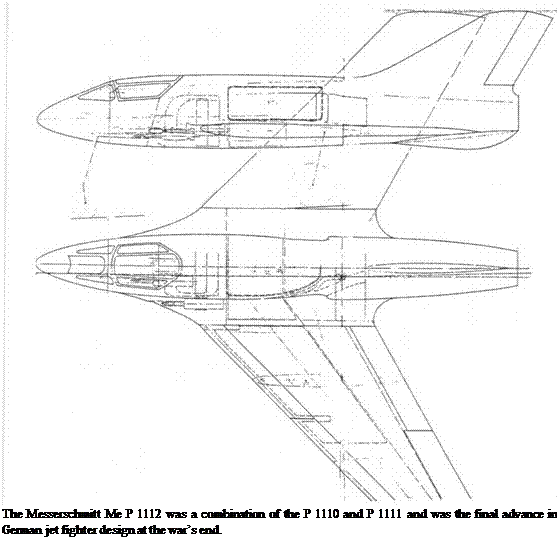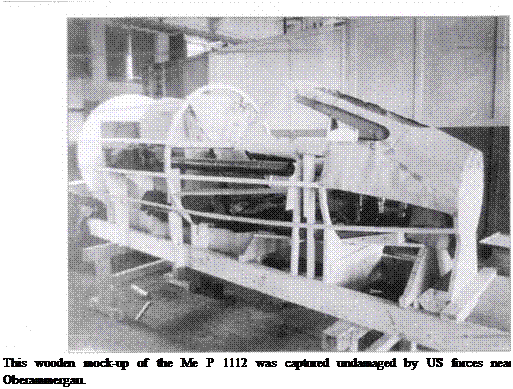Final Decisions
Besides the aircraft already described, numerous other projects were in hand at the beginning of 1945. On 22 February Goring issued a personal order reducing
these to two: the TL Project Fighter and the TL Project Reconnaissance aircraft, Bomber, Night fighter and Fighter bomber.

The emboldened pursuit of these projects resulted from Heinkel-Hirth’s great strides on the HeS Oil turbine giving rise to great optimism that early series production (HeS Oil A-0) would begin shordy. Chief-TLR was reckoning on beginning mass production of HeS ОН A-l in April or May 1945, and therefore the manufacture of a suitable fuselage was given a much higher priority than previously. On 25 February Oberammergau research centre and Willy Messerschmitt himself undertook an evaluation for the new 1 TL Fighter

including the plans of Blohm Sc Voss, Focke-Wulf, Heinkel and Junkers. The work almost completed preparations for a quick decision by EH К to select the best designs for mass production submitted by industry. Most projects as a rule had a speed between 900 and 1,050 km/hr (560-650 mph).The calculated rates of climb ranged from 22 to 30 m/sec (70-100 ft/sec).The best design on paper appeared to be the He P 1078, followed by the Me Pi 101 and the PI 110 to PI 112. The performance of these projects differed little from those of the Focke – Wulf jet fighter I and II (Та 183).
The DVL evaluated the submissions and decided at the end of February 1945 that the new Messerschmitt fighters had the greatest development potential, while warning of the problems of turbine non-deliveries, unprotected fuel tanks and engine spaces. DVL specialists were against tailless aircraft, such as the flying wing projects, but did not condemn them outright. In their opinion the future ‘standard fighter’ should have a relatively spacious fuselage, principally to accommodate more powerful turbines.
It was finally resolved on 28 February that DVL would not recommend series production, but that the Me Pi 101 already being built as a ‘study aircraft’ should be finished urgently and flight-tested. The same applied to other designs at an advanced stage, such as those at Focke-Wulf. In any case the future speed was to
be about 200 km/hr (125 mph) faster than the 850 km/hr (530 mph) average of the Me 262 A-la in order to maintain a tactical advantage in combat against Allied jets once they appeared. After this, Chief-TLR designated the Та 183 as ‘the immediate solution’and the Me Pi 112 as the optimum solution.
On 23 March 1945 the Department for Aircraft Development discussed with EHK at Bad Eilsen the future procedures for the 1 TL Fighter. Meanwhile the Fiihrer’s Plenipotentiary for Jet Aircraft, Dr Kammler, had become involved and ruled that neither the Та 183 project nor those of Messerschmitt were to go through: all further work should be devoted to the EF 128 since this design seemed to him the most advanced. On 12 March the Chief-TLR and the Riistungsstab ordered that the 1 TL Fighter was to be abandoned.










